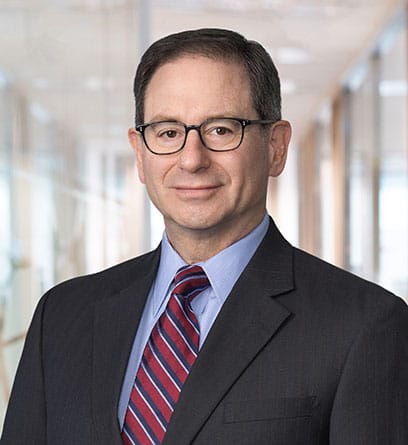Many of the issues on the next President’s plate have unique resonance within the private equity world. Here is our list of the top ten private equity issues that the new President and Congress may tackle in the upcoming year:
- Tax fairness: How should fee income be taxed?
Those individuals and firms that manage assets for others, whether as a private equity manager, hedge fund manager or other investment professional may lose their ability to pay long term capital gains tax rates on performance or other fee income because of changes in rates or the tax code.
Among others, Alan Patricof of the venture capital firm Greycroft Partners has argued that capital gains treatment for fund managers should be abolished. Instead, he argued that this performance fee for managing the profitable investments of others should be taxed as income to the manager because the gain is compensation for services rather than an increase in the value of manager’s own invested capital. The Congressional Joint Committee on Taxation estimated that eliminating capital gains treatment for carried interest would result in a $25 billion increase in tax revenues over 10 years. Michigan Sen. Carl Levin has introduced the Carried Interest Fairness Act in 2015 and both candidates have targeted it for repeal. Many have argued that “fairness” dictates a change. This modification may be part of a larger tax reform “fairness” effort. - Where are we headed with Dodd-Frank?
Dodd-Frank, which has become a synonym for “Wall Street Regulation,” has taken on a “third rail” quality this election cycle. After the pitchfork-like rhetoric has abated following the election, will any new administration believe that less regulation is advisable or make good on its promise to “rein in” Wall Street?
Form PF has significantly increased the disclosure burden private equity funds and required disclosure of sensitive information such as risk metrics, strategies and products used by the investment adviser, financial performance, assets traded using algorithms, and the percentage of fund assets held in equity and debt instruments. A 2014 survey showed a 10% increase in compliance and operating costs since the enactment of Dodd-Frank, and that the private fund industry invested 7% of total operating costs in compliance technology. Anecdotal evidence suggests that fund investors have increased their diligence of and vigilance on fund managers, especially with respect to conflicts. Side letters have proliferated.
Will there be guidance on conflict of interest disclosure and allocation of investment opportunities and fund expenses, which seem to be the areas of attention for enforcement authorities? With the overhang of potential liability for a compliance failure and the very real compliance and capital costs, the professional manager industry will carefully observe what direction the administration will push regarding Dodd-Frank. - Where will the administration focus its enforcement priorities?
With a likely divided Congress and possible split in parties between the House and the new administration, approving new federal legislation may be difficult to accomplish. But with a vast Executive branch bureaucracy at his or her disposal, a new president can wield enormous power and influence by setting regulatory priorities. Many of these priorities will be set at the secretary level by the Cabinet heads. But many of the lower-level appointments dramatically impact regulatory requirements.
For example, the SEC has recently increased its focus on the role of the Chief Compliance Officer and the effectiveness of cybersecurity efforts, especially where funds have outsourced these functions. What help can the industry expect from the new administration when so many security breaches are tied to the possible involvement of foreign governments?
Further, the next president will appoint federal prosecutors, leading to additional complexity and diffusion of authority. Additionally, some candidates have called for defendants to actually admit wrongdoing as part of any settlements. As part of a populist trend, fines and penalties may increase for corporate wrongdoing. In view of the rapidly changing environment surrounding these issues, can the private equity industry expect clarification on the conduct expected to avoid liability? - How will the “accredited investor” standard evolve?
Historically, high income and net worth standards have been used as proxies for investor sophistication and to provide bright lines to enable compliance with registration exemptions for the private placements of securities. These bright line standards were initially adopted in 1982 under SEC Regulation D. However, these outdated measures do not necessarily capture an investor’s sophistication, education, experience, or relationship with the issuer; nor do they protect even a high net worth investor from investing a disproportionate amount of his or her wealth in single risky or illiquid investment. Even if the financial metric was an effective proxy, the dollar thresholds have not necessarily kept up with current realities in view of inflation.
In a 2015 report, the SEC’s staff proposed a number of updates to modernize the accredited investor standard. Among other recommendations, they suggested:
– Combining the income and net worth threshold;
– Limiting the amount that can be invested to a percentage of income or net worth;
– Inflation-adjusting the income and net worth metrics;
– Permitting spouses to pool their finances in order to qualify as accredited investors; and
– Allowing more investors to qualify as “accredited” on the basis of high sophistication, even if the determination resulted in a lower-dollar threshold for income or net worth.
In many cases the financial wherewithal and sophistication of private equity investors vastly exceeds what is necessary to qualify as an accredited investor. But the private placement market is a significant segment of the economy, and changes to this market and who can participate in it will affect competition for capital.
Additionally, the extent to which a greater or lesser number of retail investors are able to participate in private equity will only accelerate the quickly diminishing distinction between mutual funds and private funds. We’ve already seen mutual funds taking on more hedge fund investment strategies, and private funds becoming subject to more a mutual fund-like regulatory scheme. It will be very helpful for the private equity world to gain some insight into the administration’s thinking on this. - How will non-financial regulators impact private equity players?
Private equity has been under a microscope with respect to the industry’s employment practices. A number of high-profile discrimination suits have dominated the press, and a 2015 study by Preqin reported that women hold less than 12% of leadership roles in the private equity industry. Another 2015 study concluded that woman- and minority-owned private equity firms comprised well under 10% of the overall private equity market. The National Labor Relations Board recently challenged the non-disparagement, confidentiality and arbitration provisions of the non-disclosure agreement that employees of Bridgewater Associates are required to sign.
Will the new administration adopt a policy that pressures private equity sponsors to change business practices that are perceived to be unpopular? Will it pursue that policy through executive branch action in areas that are not within the traditional financial regulatory scheme? For example, will an anti-Wall Street sentiment spur increased employment regulation in an effort to influence behavior in the private equity field? - How will immigration policy affect portfolio companies’ access to qualified labor?
Immigration policy has been an issue of heated debate during the campaign season. The companies operating in private equity funds’ portfolios are often likely to avail themselves of non-U.S. workers. Reducing or eliminating immigration will drastically impact the skilled workforce, making it older and smaller, and possibly less skilled (or at least less willing to take on certain jobs). Labor availability impacts every segment of the economy, from technology to agriculture to manufacturing to services, and will have a significant impact on the stability of retirement funding and other programs that depend on support from a younger workforce. “Fair wage” or minimum wage standards also impact the availability of qualified employees. All participants in the economy have a stake in whether or how the election rhetoric is implemented, if at all, and many of private equity’s investment targets will be affected. - Where will the government focus spending, and how will tax policy be used to influence the flow of capital?
What development projects will the new administration focus on? Infrastructure? Clinton proposed a five-year, $275 billion infrastructure program designed to repair roads and bridges, expand public transportation options, connect all citizens to the internet (with free Wi-Fi and 100% broadband access by 2020), and save $100 billion in delays over the next 15 years by investing in airports and national airspace — along with investments in clean energy and clean water. How will the climate change debate impact these priorities? What tax credits or other incentives will be available to support these and other infrastructure initiatives? Private equity is examining the administration’s choices to determine where new market will open, where old markets will decay, and the best places to invest for future growth. - Will regulations be loosened to help entrepreneurs raise capital?
Since the Jumpstart Our Business Startups Act, called the JOBS Act, was signed into law in April 2012, Congress and the SEC have grappled with how to relax capital formation regulations while also protecting investors from unscrupulous fraudsters. This balance has yet to be achieved with the implementation of the new crowdfunding rules. The next president and their new administration will face the challenge of how to increase flexibility so those raising capital can access the almost $30 billion U.S. private placement market. - Can the U.S. capture tax revenue from those global businesses that earn substantial income overseas?
It has been estimated that over $2 trillion is stashed overseas by U.S. corporations, with about 20% of it held by Microsoft, Apple, Google, and five other technology firms. How will the U.S. Treasury capture some of this cash while creating incentives to earn more in the U.S.? Can some sort of deal be fashioned to permit these companies to repatriate these profits to the U.S., perhaps at a lower tax rate? - How should PE managers communicate with investors in asset pools that include ERISA plans?
With the advent of the new Department of Labor “fiduciary rules” a number of key questions remain open, including how fund managers communicate with investors without inadvertently becoming ERISA “fiduciaries” and becoming subject to the strict rules that accompany that status. Although the new rule is aimed at broker-dealers and does not specifically apply to private funds, PE funds are not exempted and could inadvertently fall under the rule. When investing in a specific transaction or marketing the fund to potential investors, fund managers whose portfolios include ERISA plan assets might be considered to have made a “recommendation” or provided “investment advice” – triggering the fiduciary rule. The added compliance expense and potential liability associated with fiduciary status makes it important for the DOL to provide clarification.
Many of these conundrums have endured through the last several elections. Because no easy fixes are evident, they continue to be tough problems — problems that hopefully the next president will tackle.
Matt Hafter and David Kaufman are corporate and securities attorneys in the Chicago office of Thompson Coburn LLP. This article originally appeared in Law360’s Expert Analysis.


